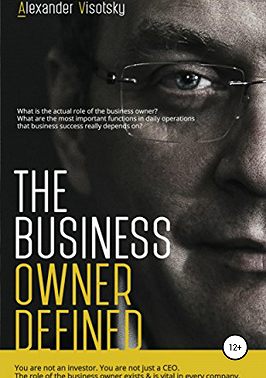- Главная
- Менеджмент
- ⭐️Александр Высоцкий
- 📚«A Job Description for the Business Owner»


Отсканируйте код для установки мобильного приложения MyBook
Премиум
A Job Description for the Business Owner
181 печатная страница
Время чтения ≈ 5ч
2019 год
12+
Эта книга недоступна.
Узнать, почемуWhat is the difference between the duties of a business owner and the duties of a senior executive in a company? If you are a business owner, you probably have already asked yourself this question. But at the same time you may have never seen a complete, detailed, step-by-step description of all the basic duties of a business owner of a typical company.
читайте онлайн полную версию книги «A Job Description for the Business Owner» автора Александр Высоцкий на сайте электронной библиотеки MyBook.ru. Скачивайте приложения для iOS или Android и читайте «A Job Description for the Business Owner» где угодно даже без интернета.
- Дата написания:
- 4 апреля 2015
- Объем:
- 325978
- Год издания:
- 2019
- Дата поступления:
- 29 апреля 2025
- ISBN (EAN):
- 9781540422026
- Время на чтение:
- 5 ч.
Поделиться
О проекте
О подписке
Другие проекты